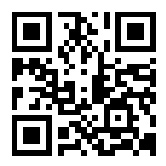The development of medical electronic sensors should meet the needs of the global medical market
In the medical device market, miniaturization, low power consumption and high liquid media compatibility have become the global development trend. However, in different countries and regions, material specifications, product requirements and cost problems are different. This requires sensor manufacturers to provide flexible and scalable product lines to meet the needs of customers worldwide. In addition, sensor manufacturers must ensure product quality and supply quality. To meet the needs of global medical device manufacturers, sensor manufacturers must consider four key issues: miniaturization, material specifications and standards, supplier quality assurance, and service and support.
Miniaturization affects product size, portability, and weight
Designers are facing a number of challenges to develop smaller, lighter and more portable medical devices that save room space and are easier for medical staff to use. For example, traditional infusion pumps and insulin pumps are both bulky and optimized for portable and mobile devices that provide significant benefits to patients and healthcare workers. For example, smaller sensors can be easily integrated into infusion pumps where space is limited. Due to its small size and low power consumption, the portability of the infusion pump can be further improved, helping to improve the convenience of life for patients. In addition, more patients are opting for "home care" rather than "hospital care" -- a trend that is particularly common in the US and Eu countries. The shift in treatment patterns is also driving the trend toward miniaturization of medical devices, including respiratory and diagnostic devices.
In some cases, miniaturization may consider incorporating diagnostic functions into networked medical devices to remotely monitor patient treatment and care. Therefore, it is necessary to choose sensor products that combine multiple detection functions (such as humidity and temperature detection) in a single package. This opens up the possibility for medical device manufacturers to reduce the size or improve the functionality of their devices. Breathing devices used in respiratory therapy, including ventilators and sleep ventilators, benefit from this design.
Another way for sensor manufacturers to meet these requirements is to further develop sensor product lines that offer a wide variety of mechanical interfaces, mounting forms, packages, and I/O options. In this way, medical device designers can choose the right interface to reduce footprint, reduce cost, and eliminate additional components. For example, pressure sensors should be provided with multiple installation options for space-constrained applications so that designers can place the sensors in the right position for accurate detection. Sensor installation is critical for applications that require accurate measurement. For example, in dialysis treatment, the use of sensors to accurately measure dialysate fluid and venous pressure is directly related to the patient's life safety.
For portable applications, the sensor needs to meet the requirements of low voltage and low power consumption, which can extend battery life. The sensor should also provide two modes: start/sleep. The device will consume power only in start mode. The sensor's sleep mode extends battery life and reduces power supply size, thus reducing the weight of medical devices.
Reprinted from international e-commerce information network


